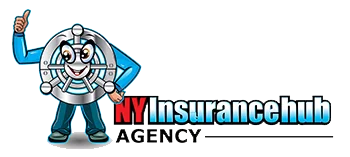Determining who is legally responsible in an auto accident requires pinpointing who the negligent party is. In most cases, common sense can be used to determine fault. However, most drivers who are victims in accidents do not know exactly which laws are broken by the at-fault party. This makes it more difficult to prove a case to an insurer when making a claim. There are a few places to look for this supportive information.
Police Reports
If the accident was reported to police or if 911 was called to report injuries, there will be a police report. Call the local law enforcement traffic division to ask about getting a copy of the police report. Many police reports contain a responding officer’s opinion about who was at fault. If one party clearly violated any laws, that will be stated in the report. In most cases, any broad or specific mention of the other party violating a law that resulted in an accident is enough to satisfy an insurance company.
State Laws
Another good resource for finding information is state traffic laws. These are known in most states as vehicle codes, and they can usually be found by visiting the state’s DMV site online. For those who prefer written information, it is better to visit a local DMV office to request a copy of these. They may be printed in driving handbooks as well. Campus law libraries and local public libraries may have more detailed versions of these codes. However, the simplified versions provided by the DMV are written in easy-to-understand terms. In the code, look for a summary of listings. Search for topics that are applicable to accidents such as roadway markings, right of way and speed limits. When unsure where to look, ask an agent for help.
No-Doubt Liability
In some types of accidents, the other driver is almost always at fault. With these forms of accidents, insurers rarely investigate the claim or argue about them. For example, someone who hits the back of another driver’s vehicle is almost always to blame regardless of the other driver’s reason for stopping or how fast they braked. One of the basic rules of the road in every state is that a driver should follow a vehicle ahead at a safe enough distance to be able to stop even if the other person brakes suddenly. Also, damage is easy to prove with a rear-end accident. One driver’s vehicle will be damaged on the front end, and the other driver’s vehicle will have damage to the rear.
For drivers who are rear-ended, there are still a few situations where their carelessness is a contributing factor to the accident. If the insurance company investigates the claim and finds that the claimant’s brake lights were out, this could reduce the amount of allowable compensation. The claimant’s compensation may also be lower if he or she had ignored mechanical issues that should have been fixed and were a contributing factor to the accident.
Another example of an accident where there is a clear violator is a left-turn accident. Anyone who makes a left turn and is struck by a vehicle on the other side of the road that is going straight in the opposite direction is an at-fault driver. However, drivers with the right-of-way at a four-way stop are not to blame for left-turn accidents. This is also true if there is a green turn arrow in an intersection where oncoming traffic ignores the signal. Another exception is when the oncoming vehicle greatly exceeds the speed limit, which results in an inaccurate time calculation for the turning driver.
In a left-turn accident, it is usually easy to see who is to blame. The turning driver will have damage on the side of the vehicle, and the oncoming vehicle will have damage to the front end or the side if the turning driver tried to swerve. To learn more about determining accident fault and how different types of accidents are investigated, discuss concerns with an agent.

